Track 1:
Display Technologies
|
SE-1: Structurally Engineered Nanocrystal Quantum Dots for Light-Emitting Applications
Wan Ki Bae
Assistant Professor
Sungkyunkwan University |
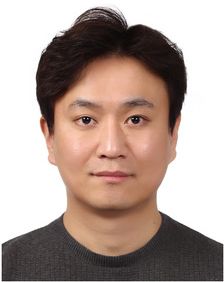 |
|
Freestanding nanocrystal quantum dots (QDs) promise the next generation of optoelectronic applications ranging from color-saturated displays to low-threshold lasers based on cost-effective solution-processing methods. Recent studies have unveiled that the structural features of QDs govern the carrier dynamics within individual QDs and assemblies and thus have a significant impact on the performances of optoelectronic devices.
Wan Ki Bae received his Ph.D. from the School of Chemical & Biological Engineering at Seoul National University in 2009. He is an assistant professor at the Sungkyunkwan Advanced Institute of Nanotechnology (SAINT) at Sungkyunkwan University. He has also been a senior researcher at both the Korea Institute of Science and Technology (2013 - 2018), and a postdoctoral researcher at Los Alamos National Laboratory (2010 - 2013) and the School of Electrical Engineering & Computer Science at Seoul National University (2009 - 2010). His areas of expertise include optoelectronic devices (light-emitting diodes, photodetectors, and photovoltaic devices) based on quantum dots; the photophysical properties of quantum dots; and the synthesis and characterization of quantum dots.
Moderator: Abhishek K Srivastava, Hong Kong University of Science and Technology
|
Track 1:
Display Technology
|
SE-4: Introduction to MicroLED Displays
Ioannis (John) Kymissis
Professor of Electrical Engineering
Columbia University |
 |
|
MicroLED technologies unlock the potential for LEDs to serve as active-emissive display elements at the pixel level, allowing for development of displays with extraordinary performance, including otherwise unavailable levels of contrast, luminance, and color gamut. This seminar will discuss the basics of LEDs and the strategies that have been developed for monolithic, nanowire, and pick-and-place microLED approaches. Several recently announced products and technical perspectives on the expectations for the impact of microLEDs on direct-view, flexible, stretchable, AR, VR, and non-display technologies will also be discussed.
Ioannis (John) Kymissis graduated with his SB, M.Eng., and Ph.D. degrees from MIT. His M.Eng. thesis was performed as a co-op at the IBM T.J. Watson Research Lab on organic thin-film transistors, and his Ph.D. was obtained in the Microsystems Technology Lab at MIT, working on field-emission displays. After graduation, he spent three years as a postdoc in MIT's Laboratory for Organic Optics and Electronics, working on a variety of organic electronic devices, and also as a consulting engineer for QD Vision. He joined the faculty at Columbia University in electrical engineering in 2006 as an assistant professor. He has won a number of awards for his work, including the NSF CAREER award, the IEEE EDS Paul Rappaport award, the Vodaphone Americas Foundation Wireless Innovation Award, the MIT Clean Energy Prize, and a Verizon Powerful Answers award. An SID Fellow, he recently served a term as the editor-in-chief of the Journal of the Society for Information Display. In addition, he was the general chair for the 2014 Device Research Conference and was the program vice chair for the 2019 SID Display Week Symposium.
Moderator: Ion Bita, Google LLC
|
Track 1:
Display Technologies
|
SE-7: Ultraflexible and Stretchable Electronic Systems
Tsuyoshi Sekitani
Distinguished Professor
Osaka University |
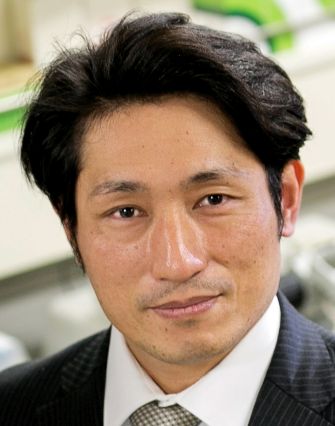 |
|
This seminar introduces recent progress and future prospects for large-area, ultraflexible, and stretchable electronic devices, with a focus on manufacturing technologies for ultraflexible and stretchable electronics, and integration technologies for thin-film electronic systems comprising ultrasoft sensors, thin-film amplifiers, Si-LSI platforms, thin-film batteries, and imperceptible active sensors based on information engineering (artificial intelligence or AI).
Tsuyoshi Sekitani is executive assistant to the president and a distinguished professor at Osaka University. He received a Ph.D. in physics from the University of Tokyo in 2003. His research interests include flexible electronic systems, organic electronics and transistors, plastic integrated circuits, large-area sensors and medical electronics, wearable and implantable electronics, and brain monitoring. Sekitani has developed some of the world’s thinnest and lightest sheet-type sensors and promoted their implementation in medical and other devices. Examples include a patch-type electroencephalography (EEG) sensor that can precisely monitor brain waves when simply attached to the forehead. He was selected by Clarivate Analytics as one of the World’s Most Influential Scientific Minds, which consist of researchers whose papers are the most highly cited (in the top 1 percent of all researchers) among all academic fields, in 2014 and 2018. He was also selected as one of the Most Influential People for Japan 2017 by Nikkei Business.
Moderator: Takahiro Ishinabe, Tohoku University
|
Track 1:
Display Technologies
|
SE-10: Progress, Challenges, and Opportunities of Head-Mounted Light-Field Displays for Mixed Reality
Hong Hua
Professor, James Wyant College of Optical Sciences (OSC)
The University of Arizona |
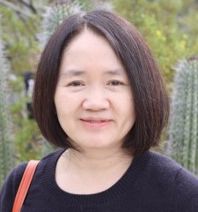 |
|
This seminar focuses on recent progress, as well as challenges and opportunities, in developing head-mounted light-field displays, which are capable of rendering true 3D synthetic scenes. Proper focus cues are key to stimulating natural eye accommodation responses and addressing the well-known vergence-accommodation conflicts of conventional stereoscopic displays.
Hong Hua, a Fellow of SPIE, OSA, and the National Academy of Inventors (NAI), is currently a professor with the James Wyant College of Optical Sciences (OSC) at The University of Arizona. With more than 25 years of experience, she is widely recognized through academia and industry as an expert in wearable display technologies and optical imaging and engineering in general. Her current research focuses on optical technologies enabling advanced 3D displays, especially head-mounted display technologies for virtual- and augmented-reality applications, and microscopic and endoscopic imaging systems for medicine. Hua and her students have shared a total of eight “Best Paper” awards at various IEEE, SPIE, and SID conferences. She received her Ph.D. in optical engineering from the Beijing Institute of Technology in 1999. Prior to joining the UA faculty in 2003, Hua was an assistant professor with the University of Hawaii at Manoa in 2003, a Beckman Research Fellow at the Beckman Institute of University of Illinois at Urbana-Champaign between 1999 and 2002, and a postdoc at the University of Central Florida in 1999.
Moderator: Khaled Ahmed, Intel
|
Track 1:
Display Technologies
|
SE-13: MiniLED, OLED, or MicroLED: Who Wins?
Shin-Tson Wu
Pegasus Professor
College of Optics and Photonics
University of Central Florida |
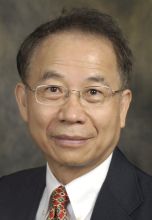 |
|
MiniLED, OLED, or MicroLED: Who Wins? is a hotly debated question. This seminar will analyze and compare these three promising display technologies in terms of dynamic range and ambient contrast ratio, color gamut and angular color shift, motion picture response time, form shape, lifetime, and power consumption.
Shin-Tson Wu is a Pegasus Professor in the College of Optics and Photonics at the University of Central Florida (UCF). Prior to joining UCF in 2001, he was with Hughes Research Labs in California, where the first laser and liquid-crystal-on-silicon were invented. Dr. Wu is among the first six inductees to the Florida Inventors Hall of Fame. He is a Charter Fellow of the National Academy of Inventors, and a Fellow of the IEEE, OSA, SID, and SPIE. Professor Wu is the recipient of the OSA Esther Hoffman Beller Medal (2014), SID Slottow-Owaki Prize (2011), OSA Joseph Fraunhofer Award (2010), SPIE G. G. Stokes Award (2008), and the SID Jan Rajchman Prize (2008). He is an endowed honorary professor of National Chiao Tung University (2017) and Nanjing University (2013). He was the founding editor-in-chief of the IEEE/OSA Journal of Display Technology. He has co-authored seven books, 580 journal papers, and obtained 91 US patents. Presently, he serves as the SID Honors and Awards committee chair.
Moderator: Deng-Ke Yang, University of Central Florida
|
Track 2:
Display Manufacturing Technologies
|
SE-2: Key Enabling Technologies for Flexible AMOLED Displays
Glory (Kuang-Jung) Chen
Deputy Division Director
Electronic and Optoelectronic System Research Laboratories
Industrial Technology Research Institute |
Chen.jpg) |
|
This seminar will review the technology development and challenges of foldable, transparent, and stretchable AMOLED displays. Various technologies, such as high-impact-resistant structures for foldable AMOLED, transparent pixels for high transparency AMOLED, and solution-type OLED thin-film encapsulation for stretchable AMOLED are proposed for flexible displays.
Glory (Kuang-Jung) Chen has been involved in OLED technology development since 1998. He joined Toppoly (now a part of INNOLUX) and worked on AMOLED projects from 2001 to 2007. During this period, he helped set up one of the world’s first OLED R&D labs and, later, a mass production line for AMOLED. Since 2008, he has been a chief architect, and lead engineer of the flexible AMOLED development programs at Industrial Technology Research Institute (ITRI). He is currently deputy division director of the Electronic and Optoelectronic System Research Laboratories at ITRI.
Moderator: San-Hee Ko Park, KAIST
|
Track 2:
Display Manufacturing Technologies
|
SE-5: Printing Technology in Display Manufacturing — an Overview
Jun Souk
Professor
Hanyang University |
 |
|
This seminar includes a review of printing technology in displays; the basic principles of solution printing; advances in inkjet printing for large-size OLED panels; and a discussion of hurdles and challenges. Finally, the realities of printing technology are described through a comparison of its bright and its dark sides.
Jun Souk is a professor at Hanyang University and a former executive VP/CTO and head of the Display R&D Center at Samsung Display Co. Prior to joining Samsung, he worked for IBM T.J. Watson Research Center. Souk began his academic career at Seoul National University, where he earned degrees in physics. He went on to earn his M.S. degree in material science from Drexel University and an honorary doctorate in science from Kent State University. Souk has more than 30 years of experiences in TFT-LCD and future display technologies, including OLEDs, flexible displays, and printed electronics. He also has expertise in display processes, materials, and equipment. He is the chief editor of the book Flat Panel Display Manufacturing (Wiley & Sons, 2018) and has published more than 60 research articles. In 2012, Souk received the Karl Ferdinand Braun Prize from SID. He is also an SID Fellow.
Moderator: Kyung Cheol Choi, KAIST
|
Track 2:
Display Manufacturing Technologies
|
SE-8: Printed OLED Displays and Their Backplane Technology
Toshiaki Arai
Chief Technologist
JOLED, Inc. |
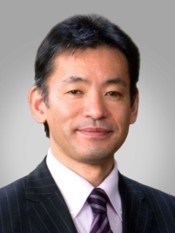 |
|
Printing technology has finally been applied to the manufacturing of 4K OLED displays. This RGB printing technology is expected to improve productivity dramatically. This seminar will describe RGB printing technology and the recent development status of the oxide TFT for large-size OLED display driving.
Toshiaki Arai received his M.E. from the University of Electro-Communications and his Ph.D. from the Nara Institute of Science and Technology. He joined IBM Japan, Ltd., in 1990 and engaged himself in a-Si TFT development for AMLCD and AMOLED displays. He joined Sony Corp. in 2004 and worked on microcrystalline-Si and oxide TFT development for AMOLED displays. He transferred to JOLED, Inc., in 2015 and began working in backplane development for AMOLED displays. He is currently a chief technologist at JOLED. He has been a program committee member of the Society for Information Display (SID) since 2002 and was elected a SID Fellow in 2017. He became a co-chair of SID’s Japan Chapter in 2019.
Moderator: Byoungho Lee, Seoul National University
|
Track 2:
Display Manufacturing Technologies
|
SE-11: Stretchable Displays and the Networked Body
John A. Rogers
Professor of Materials, Science and Engineering, Biomedical Engineering and Medicine
Northwestern University |
 |
|
Recent advances in materials, mechanics, and manufacturing science establish the foundations for display technologies that have soft, stretchable physical properties. The resulting devices create opportunities in consumer gadgetry and in platforms for clinical-quality monitoring of physiological status. This seminar summarizes the key ideas and the current status of these emerging technologies.
John A. Rogers is the Louis Simpson and Kimberly Querrey Professor of Materials Science and Engineering, Biomedical Engineering and Medicine, at Northwestern University, with affiliate appointments in Mechanical Engineering, Electrical and Computer Engineering, and Chemistry, where he is also director of the recently endowed Center for Bio-Integrated Electronics. He has published more than 700 papers, is a co-inventor on more than 100 patents, and has co-founded several successful technology companies. His research has been recognized with many awards, including a MacArthur Fellowship (2009), the Lemelson-MIT Prize (2011), the Smithsonian Award for American Ingenuity in the Physical Sciences (2013), and most recently the Benjamin Franklin Medal from the Franklin Institute (2019). He is a member of the National Academy of Engineering, the National Academy of Sciences, the National Academy of Medicine, the National Academy of Inventors, and the American Academy of Arts and Sciences.
Moderator: Hyun Jae Kim, Yonsei University
|
Track 2:
Display Manufacturing Technologies
|
SE-14: Stretchable Electronics Technology (Displays and Sensors)
Yongtaek Hong
Professor
Seoul National University |
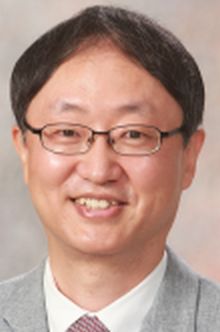 |
|
In this seminar, state-of-the-art technology development in stretchable materials and devices will be reviewed. Next, technical issues, key enabling technologies, and insights for future development will be addressed for stretchable electronics, with a focus on displays and sensors. Substrate materials, strain engineering, stretchable interconnect, stretchable light-emitting devices and thin-film transistors, and stretchable hybrid electronics system will be included.
Yongtaek Hong received B.S. and M.S. degrees in electronics engineering from Seoul National University and a Ph.D. in electrical engineering from the University of Michigan. From 2003 to 2006, he was a senior research scientist at Display Science & Technology Center, Eastman Kodak Company. Since 2006, he has been a full professor at Seoul University. He was also a visiting professor at Stanford University from 2012 to 2013. His research interests are printed/flexible/stretchable thin-film devices, and displays and sensors for wearable and electronic skin applications. Hong has received many awards, including the IEEE EDS “2005 George E. Smith Award,” the IEEE/IEEK “Young IT Engineer of the Year Award” in 2010.
Moderator: Ya-Hsiang Tai, National Chiao Tung University
|
Track 3:
Display Technologies and Applications
|
SE-3: Display and Emerging Technologies Market Forecast – LCD, OLED, Micro and MiniLED, e-Paper, Touch Screen, and Smart Windows
Jennifer Colegrove
CEO and Principal Analyst
Touch Display Research, Inc. |
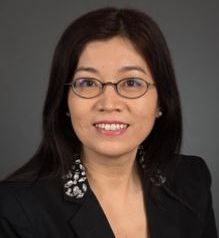 |
|
A forecast of the overall display market from 2020 till 2030 as well as a market forecast of emerging technologies will be provided in this seminar. Also discussed will be new opportunities: improved LCDs, micro and miniLEDs, flexible and curved displays, quantum dots, OLED displays, AR/VR, e-Paper, touch screens, and smart windows.
Jennifer K. Colegrove is the CEO and principal analyst of Touch Display Research Inc. (www.TouchDisplayResearch.com), a market research and consulting firm focusing on touch-screen, display, and emerging technologies. She writes reports and performs consulting projects with a passion for touch screen and display technologies, including touch panels, ITO replacements, active pens, smart windows, AR/VR displays, flexible displays, OLED displays, quantum dots, micro and miniLEDs, 3D displays, e-paper displays, and touchless sensors. Colegrove has over 19 years of industry experience. She holds lots of analyst “firsts:” She was the first analyst to write a comprehensive touch-screen industry report in 2006 (therefore, she is called “Doctor Touch” by her colleagues); she was the first analyst to write an active pen industry report in 2013; she was the first analyst to write an ITO-replacement industry report in 2013; she was the first analyst to write a quantum dot industry report in 2013; and she was the first analyst to write a touchless HMI industry report in 2014. Colegrove has advised over 200 companies through her standard reports and consulting projects over the past several years. She has authored over 100 forecast reports and been a featured speaker at over 100 international conferences. Previously, she was vice president at DisplaySearch (currently IHS), and senior analyst at iSuppli (currently IHS). Prior to that, she performed due diligence for Intel Capital, the venture capital arm of Intel, as a senior display engineer. Colegrove has a Ph.D. from the Liquid Crystal Institute at Kent State University in Ohio. She received both her bachelor’s and master’s degrees with honors from Peking University in Beijing, China.
Moderator: Mutsumi Kimura, Ryukoku University
|
Track 3:
Display Technologies and Applications
|
SE-9: Artificial Intelligence: from Pixels and Phonemes to Semantic Understanding and Interactions
Achin Bhowmik
CTO & EVP of Engineering, Starkey Hearing Technologies
Adjunct Professor, Stanford University |
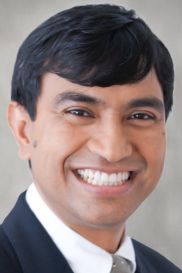 |
|
In this seminar, a tutorial on the deep learning methods in artificial intelligence (AI) will be presented, especially focusing on visual recognition and language processing towards semantic understanding and interactions. Starting with the basics of cognitive neuroscience and the human perceptual system, we will cover deep neural network architecture, machine learning algorithms including training AI models with backpropagation and gradient descent techniques, and hands-on demonstrations of intelligent inferencing examples in practical applications.
Achin Bhowmik is the chief technology officer and executive vice president of engineering at Starkey Hearing Technologies, a privately held medical devices business with over 6,000 employees and operations in over 100 countries worldwide. In this role, he is responsible for the company’s technology strategy, research, product development, and engineering departments, and is leading the drive to transform hearing aids into multifunction wearable health devices with advanced sensors and artificial intelligence technologies. Prior to joining Starkey, Dr. Bhowmik was vice president and general manager of the Perceptual Computing Group at Intel Corporation. There, he was responsible for the R&D, engineering, operations, and businesses in the areas of 3D sensing and interactive computing, computer vision and artificial intelligence, autonomous robots and drones, and immersive virtual and merged reality devices. Previously, he served as the chief of staff of the Personal Computing Group, Intel’s largest business unit with >$30 billion in annual revenues in 2010. Dr. Bhowmik is an adjunct professor at Stanford University, where he advises research and teaches courses in the areas of multisensory cognition enabled by perceptual computing and artificial intelligence. He has also held adjunct and guest professor roles at the University of California, Berkeley; Liquid Crystal Institute of Kent State University; Kyung Hee University, Seoul; and the Indian Institute of Technology, Gandhinagar. Dr. Bhowmik was elected a Fellow of the Society for Information Display (SID). He serves on the board of trustees for the National Captioning Institute, board of directors for OpenCV, executive board for SID, and board of advisors for the Fung Institute for Engineering Leadership at UC Berkeley. He also serves on the board of directors and advisors for several technology startup companies. He received the Industrial Distinguished Leader Award from the Asia-Pacific Signal and Information Processing Association. He has over 200 publications, including two books and 37 issued patents.
Moderator: Lian-Chy Chien, Kent University
|
Track 3:
Display Technologies and Applications
|
SE-12: TFT Backplane Technologies for Flexible and Stretchable Displays
Jin Jang
Professor of Advanced Display Research Center (ADRC)
Kyung Hee University |
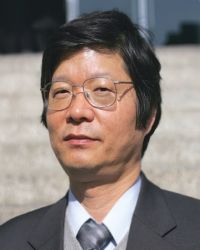 |
|
LTPS TFT backplanes on PI substrate are being used for foldable AMOLED displays for smartphone displays. Oxide TFT backplanes are also being used for rollable AMOLED TVs. This seminar will review state-of-art technologies for oxide and LTPS TFTs on PI substrates, and future prospects for foldable and rollable TFT backplanes. The TFT backplane integrated with sensors on a stretchable substrate will also be discussed.
Jin Jang is a distinguished professor with the Department of Information Display at Kyung Hee University. He is the author or co-author of more than 1,000 papers, 600 of which are in SCI journals such as Nature and Advanced Materials. He is working on oxide, LTPS, and LTPO-TFT arrays for displays, flexible AMOLEDs, AM micro-LED, and AM TFT sensors. He reported the first full-color AMLCD, flexible AMOLED, and full-color AMOLED using white OLED at SID’s Symposium at Display Week. He is currently a director of the Advanced Display Research Center (ADRC) and had served as general chairs of both IMID and SID’s Display Week. He has been awarded the George Smith Award from IEEE, the Slottow-Owaki Prize from SID, and the Ho-AM Award.
Moderator: Po-Tsun Liu, National Chiao Tung University
|